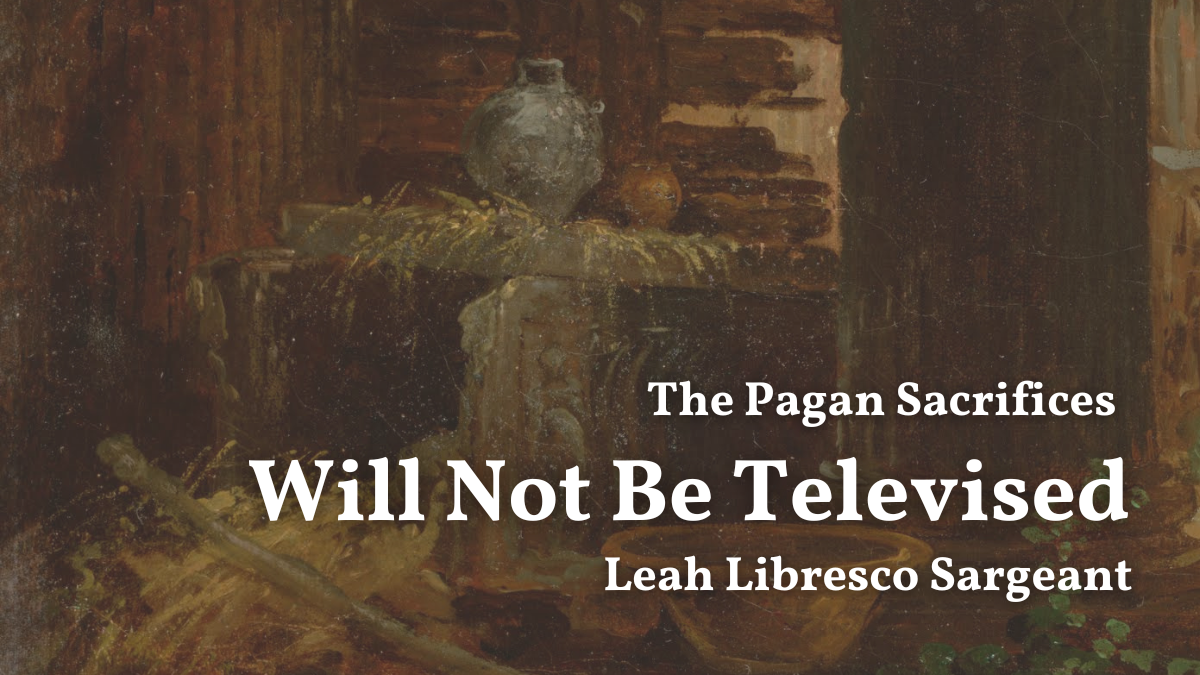This essay is part of a symposium, “Are We Repaganizing?” See the whole collection here.
Louise Perry’s “We Are Repaganizing” opens with a conversation with an archeologist. Roman brothels are recognizable by the clusters of baby skeletons—the children born of commercialized couplings, killed after birth, and tossed in the trash. Perry notes that our own time hides its killings better. At modern abortion clinics, “the remains are usually burned, along with other ‘clinical waste.’ There will be no infant skeletons for archaeologists of the future to find.”
In pagan cultures, the annihilation of the vulnerable was virtuous. In ours, it is cloaked in euphemism (“terminating a pregnancy” not “killing a baby”; “death with dignity” not “prescribing poison to the elderly”). Our delicacy is a small, fragile pledge of our resistance to paganism’s bloody frankness. Our killings are quiet, civilized, and we work hard to find ways to describe them as an act of generosity to the victim, not a rejection or a willingness to spend their lives to buttress our own.
Abortion doulas offer “non-judgmental support,” holding the hands of women who come to abortion clinics, asking them about their favorite tv shows, hearing women repeat over and over, “I didn’t want to have to do that.” Non-judgmental support means listening but not asking follow-up questions about why or what other options might be available.
In Monica Hesse’s feature on D.C. abortion doulas for the Washington Post, Lila comforts Grace, her fellow abortion doula volunteer, who worries a little for the patient expressing regret. “When she left, she wasn’t pregnant anymore,” Lila tells Grace. Hesse says this is a reminder of their training: “Their clients had come to the clinic for one reason. If they left and they were no longer pregnant, then they had found what they were looking for.”
Careful blindness keeps the contradictions of our society sustainable. We can pay lip service to our care for the vulnerable and the ways that need is a sign of a moral claim on the strong, not a reason to be pushed to the margins. But at the same time, we work hard to avoid seeing need, so that our moral commitments remain abstract and low-cost.
When someone makes weakness visible, we punish the person who showed us the cost of our choices. In 2022, pro-life activist Lauren Handy asked a medical waste company to give her one of the boxes of aborted fetal remains they were picking up from an abortion clinic, promising that if the driver gave them over, she would give them each a name and a burial. She found over 100 children who died in early abortions, and five children [content warning: graphic photos at the link] who died in late term abortions—children whose brief history could be written in bone for archeologists yet to come.
Multiple news stories described Handy as a woman who “kept fetuses” in her home, as though the children had no prior history before she called the police to ask for their deaths to be investigated. As long as the children stayed in the boxes and were burned, they were unremarkable. If they were brought to light, Handy was to blame, and she was the spectacle. (Handy is currently in jail for non-violent protests inside that same abortion clinic).
What can jar us out of our decadence and carefully engineered détente? The answer might lie in what seems like a victory for abortion access—the increased prevalence of medication abortions, self-managed at home. The abortion pill is small and simple enough to smuggle across borders or send secretly in the mail. It doesn’t require specialized training to take.
But for mothers whose children are six weeks (the size of a pea), eight weeks (raspberry), ten weeks (strawberry), their children’s bodies will never be professionalized medical waste. Mothers who take abortion pills lose their children in their bathrooms, and, like Roman women, may hold their children before hiding them.
An archeologist won’t ever find the bones, but the history is written on a mother’s heart. With each small body beheld, there’s one more crack in the dike that has hidden the river of blood.



